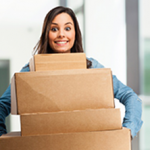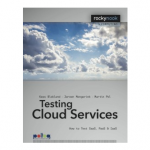 Cloud computing has been the buzzword in the world of Information Technology for quite some time and it is likely to retain that status in the coming years.
Cloud computing has been the buzzword in the world of Information Technology for quite some time and it is likely to retain that status in the coming years.
Cloud computing has been helping business enterprises deliver services faster and cheaper compared to all other existing delivery models.
Small and medium business enterprises have changed their outlook towards technology substantially thanks to the implementation of cloud computing in their core business models. It has brought down infrastructure costs like no other technology has done before, not to mention the easy (remote) access features that have developed in critical business models.
The future looks even more promising than the current scenario. The world as we know it always demands more and we can be sure that we will be seeing many more implementations of cloud computing in as many discrete operational areas as possible. Let’s look at what could be the future of cloud computing in 2013.
Collaboration between the Private and Public clouds could be the biggest trend that we witness in 2013 as enterprises are looking for new ways to help their customers benefit from the best of both worlds. A hybrid cloud strategy that provides them with the functionality and reliability of both is thus a very interesting prospect.
Speed could be a decisive factor for next generation cloud computing technologies. Depending upon network bandwidth and speed, cloud based services could be deployed at rates never before imagined. The benefit will be for end customers who rely on cloud-based bottom line services. They would get speedy service rendering resulting in time and cost savings if we take into account charges for service time.
Integration of mobile and cloud computing could become even stronger with mobile applications calling out to back-end services resting on cloud-based platforms. Seamless service delivery will happen from anywhere on the planet.
It is high time people let go of the myths in security regarding cloud computing. 2013 may very well see the end of such myths as cloud delivery platforms have become more secure than ever before with state of the art security firewalls, physical protection and the security of data centers hosting these cloud platforms.
Nothing makes your business more portable than cloud computing. It would be possible to port your data and applications anywhere in the world and all you need is a computer connected to the internet. Backup and recovery measures might be fully loaded onto cloud based platforms thanks to the convenience offered by it; case in point, GMO Cloud’s add-on services on top of their IaaS offering.
Software development companies will be stressing the importance of the cloud like never before. They can get teams of engineers to work together from every corner of the globe and this kind of collaboration would help develop software components quickly and efficiently.
Bring your own device or BYOD is going to be the talk of the town in 2013. We are seeing a paradigm shift in work culture where the freedom and power of IT are actually given to users via a web based interface. No longer is there demand for complex hardware for working on complex software products.
Open source cloud computing platforms may see a whole new dimension of demands as they have demonstrated their ability to rival proprietary competitor platforms. They’ve also shown their flexibility in supporting a plethora of services, not to mention the huge support they offer to anyone using it courtesy of its open source tag.
As far as service delivery is concerned, Software-as-a-Service (SaaS) models will continue to improve and provide faster and less expensive user experiences via simpler interfaces. The number of platforms that can be used to access software as a service would increase with smartphones embracing cloud based applications as we mentioned earlier.
All in all, 2013 will be an exciting year for business enterprises that rely on the cloud.


 Mandira Srivastava
Mandira Srivastava 















